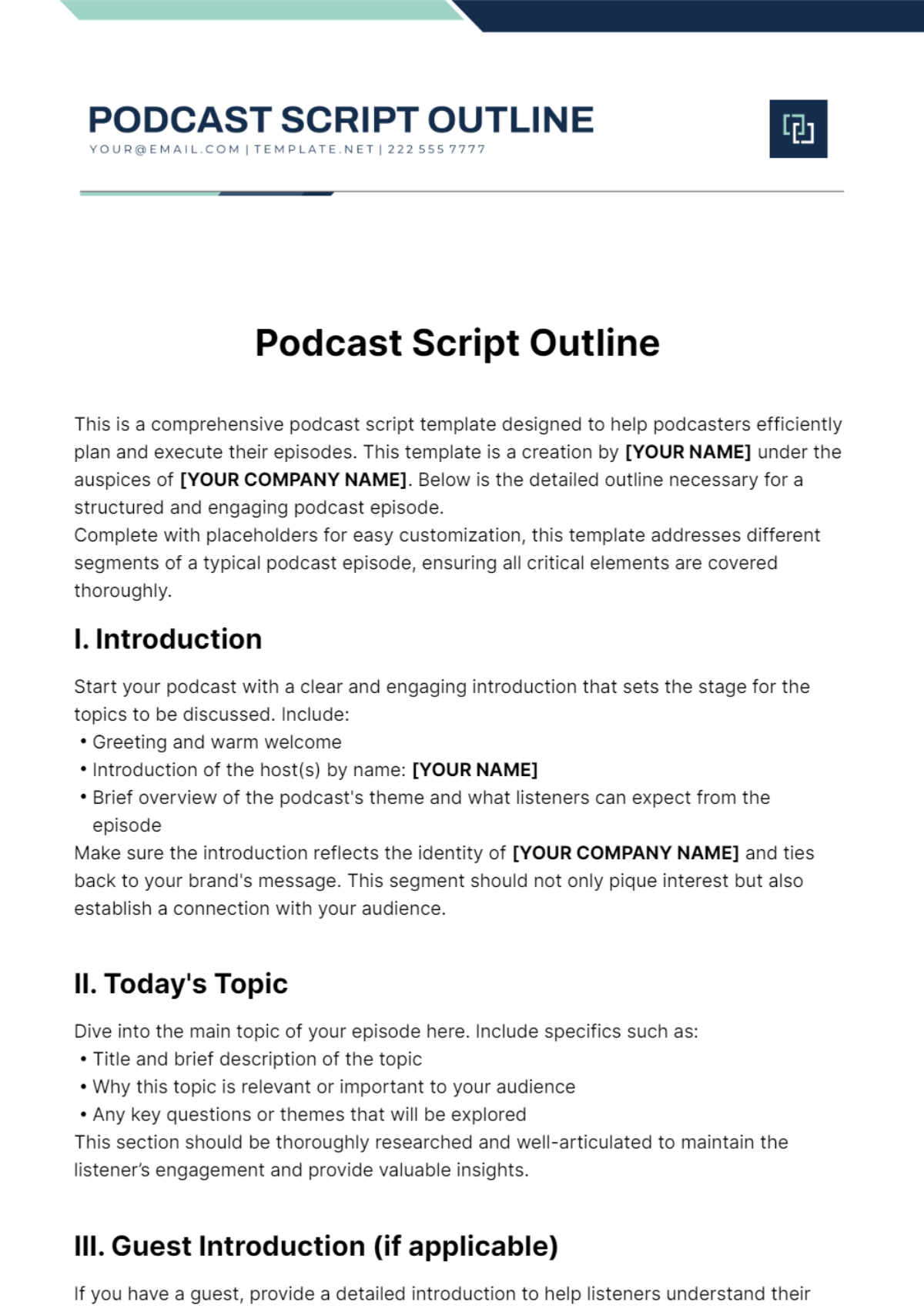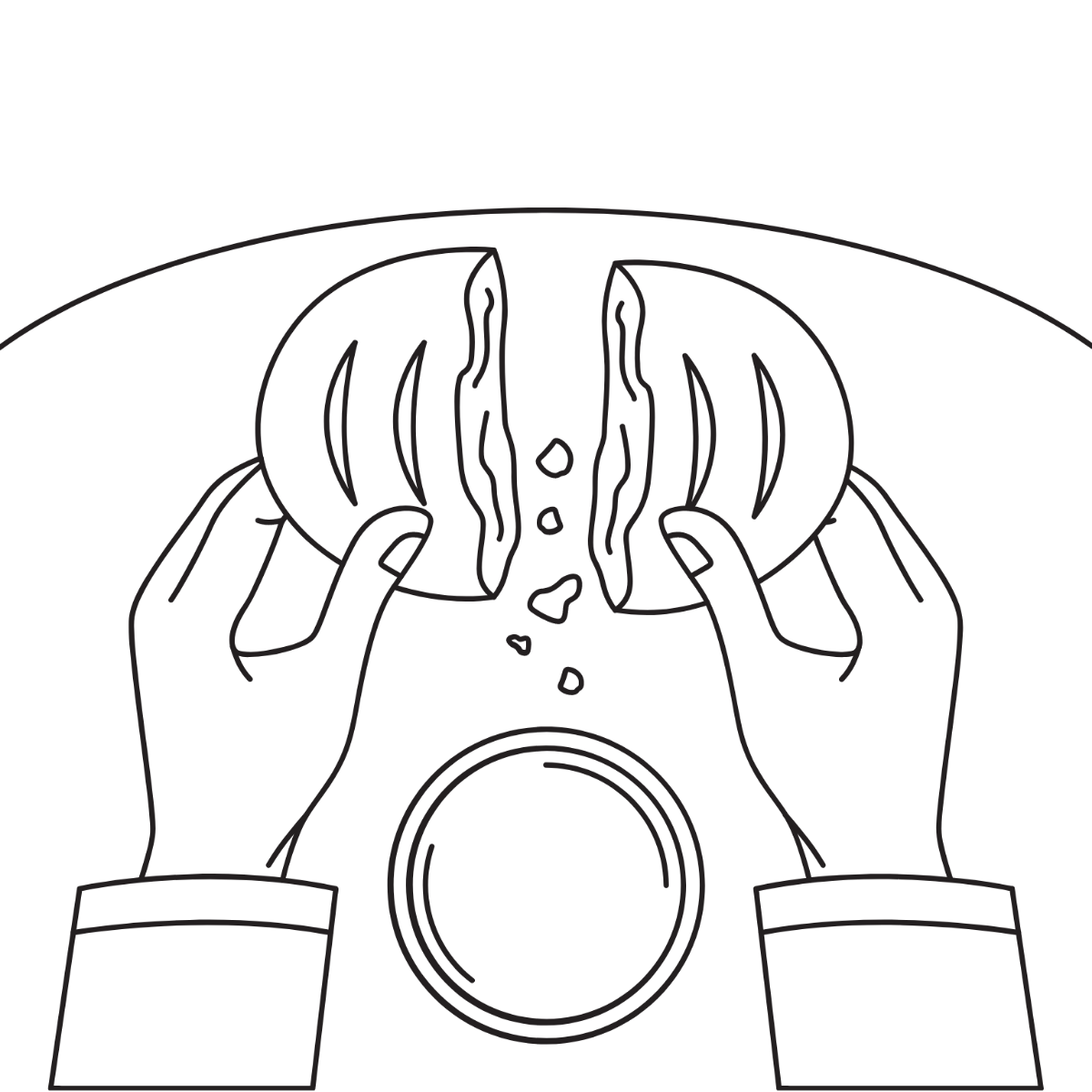Free UTM Thesis Outline Template
UTM Thesis Outline
Prepared by: [YOUR NAME]
[YOUR EMAIL]
I. Introduction
The purpose of this thesis is to explore the role of artificial intelligence (AI) in transforming the healthcare industry, specifically in the areas of diagnostics and patient care. The study will examine how AI technologies, such as machine learning and natural language processing, impact healthcare delivery by improving diagnostic accuracy and patient outcomes.
II. Literature Review
This section will provide a comprehensive review of existing research on the application of AI in healthcare. It will analyze key themes such as diagnostic tools, patient monitoring systems, and AI's role in reducing human error.
Previous Research: Various studies have shown that AI can enhance diagnostic accuracy in fields like radiology and oncology (Smith et al., 2045).
Key Theories: The Technology Acceptance Model (TAM) and Diffusion of Innovations Theory.
Research Gaps: While many studies focus on the benefits of AI, fewer address the ethical concerns and the integration challenges of AI systems in healthcare settings.
III. Research Objectives and Questions
This section defines the primary objectives and research questions that will guide the investigation.
Objective 1: To evaluate the effectiveness of AI-based diagnostic tools in reducing diagnostic errors in radiology.
Objective 2: To assess how AI-driven patient monitoring systems improve patient outcomes in critical care settings.
Research Questions:
How does the use of AI in radiology impact diagnostic accuracy compared to traditional methods?
What are the challenges faced by healthcare professionals when integrating AI-powered monitoring systems in intensive care units (ICUs)?
IV. Methodology
This section outlines the research design, methods, and tools that will be used for data collection and analysis.
Research Design: A mixed-method approach will be used, combining quantitative analysis of diagnostic accuracy and qualitative interviews with healthcare professionals.
Data Collection Methods:
Quantitative data will be collected from hospitals using AI-based diagnostic systems, focusing on diagnostic error rates.
Qualitative data will be gathered through semi-structured interviews with doctors, nurses, and healthcare administrators on their experiences with AI monitoring systems.
Analysis Methods: Statistical analysis (e.g., t-tests) will be used to compare diagnostic error rates, while thematic analysis will be applied to interview transcripts.
Timeline for Data Collection:
Pilot Testing: June 15, 2050
Data Collection Start: July 1, 2050
Data Collection End: October 30, 2050
V. Results
This section presents the findings of the research, organized by themes such as diagnostic accuracy and healthcare professionals' attitudes towards AI integration.
Theme/ Variable | Findings | Interpretation | Supporting Data | Notes |
|---|---|---|---|---|
Diagnostic Accuracy | AI diagnostic tools reduced errors by 15%. | AI tools improve diagnostic accuracy. | 200 case studies reviewed | Data from radiology departments |
Healthcare Professionals' Attitudes | 70% of healthcare workers are supportive of AI in patient monitoring. | AI is well-received but faces integration challenges. | 50 interviews conducted | Concerns about data privacy |
VI. Discussion
This section will interpret the findings and place them in the context of the existing literature. It will examine the implications of AI for both the future of healthcare and for further research.
Key Insights: The results show that AI-based diagnostic tools can significantly improve accuracy in diagnosing diseases like cancer and heart disease. However, the integration of AI in healthcare faces challenges, particularly related to data privacy concerns and the adaptation of healthcare professionals to new technologies.
Comparison with Existing Literature: The findings align with previous studies that highlight the potential of AI in healthcare (Jones, 2047), but differ in the identified barriers to adoption, such as a lack of adequate training for healthcare workers.
VII. Conclusion
The conclusion will summarize the key findings of the thesis and propose directions for future research.
Summary of Findings: The use of AI in healthcare has the potential to improve diagnostic accuracy and patient care. However, successful integration requires overcoming challenges related to training, data privacy, and resistance to change.
Implications for Future Research: Further studies should explore AI's role in specific medical fields, such as neurology or psychiatry, and investigate strategies for overcoming integration barriers.
VIII. References
This section lists all the sources cited throughout the thesis.
Smith, A., Johnson, B., & Lee, C. (2045). Artificial Intelligence in Healthcare: Applications and Challenges. Journal of Medical Technology, 15(2), 112-124.
Jones, D. (2047). The Future of AI in Medicine: Transforming Diagnostics and Patient Care. HealthTech Publishing.
Brown, M., & Green, R. (2049). Integrating AI in Healthcare: Lessons from Early Adopters. Healthcare Innovation Press.





















